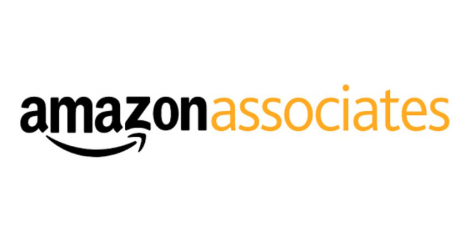When I first dived into the world of blogging, I was driven by a simple desire to share my knowledge and experiences. My journey began with a curiosity about how to make money online, and a realization that blogging could be the perfect platform for this endeavor.
Finding My Niche: A Natural Progression
When it came to finding my niche, my approach was more intuitive and based on my interests. Here’s how it unfolded:
- Following My Passion: My initial interest was in exercise and fitness. This was a topic I was genuinely passionate about, and it naturally became the focus of my early blogging efforts.
- Observing the Market: As I delved deeper into the fitness world, I noticed the prevalence and popularity of fitness channels and websites. It was clear that this was a growing market with a substantial audience.
- Zeroing in on Supplements: The turning point came when I started focusing on supplement reviews. This wasn’t the result of formal niche research; rather, it was a niche that I stumbled upon and found intriguing. It combined my interest in fitness with a specific, in-demand product category.
- Recognizing the Opportunity: I saw that while there was competition, there was also a significant demand for honest, in-depth reviews of fitness supplements. This gap in the market presented an opportunity for me to offer something unique and valuable.
- Learning on the Go: At the start, I didn’t know much about niche research or market analysis. My journey was more about learning through observation and adapting as I went along. This hands-on experience was invaluable in shaping my approach to blogging.
This natural progression into my niche was less about following a set formula and more about aligning my interests with a market opportunity.
It’s a testament to the fact that sometimes, the best way to find your niche is to start with what you love and keep an eye on where your interests meet market demand.
Content Creation: Exploring and Experimenting
My journey into content creation was a process of exploration and experimentation. Without a clear roadmap, I navigated through various content types to see what resonated with my audience and what I enjoyed writing about. Here’s what I focused on:
- Diverse Topics: I started by writing about a range of topics within the fitness realm, from exercises to supplements. This variety helped me gauge what my audience was most interested in.
- Top 10 Lists and Rankings: Lists and rankings, such as ‘Top 10 Supplements,’ were a staple on my blog. They not only provided valuable information but were also popular with readers looking for quick, actionable insights.
- Product Reviews: Writing in-depth product reviews became a significant part of my content strategy. These reviews offered detailed insights and helped my readers make informed purchasing decisions.
This approach to content creation was about finding my voice and understanding what content worked best for my audience and me.
It was a learning-by-doing experience that shaped the direction of my blog.
Monetizing My Blog: Evolving Strategies
Monetization was a crucial aspect of my blogging journey, and it evolved:
- Starting with Amazon Affiliates: Initially, I joined the Amazon Affiliate program. It was a straightforward way to start earning from my product reviews and recommendations.
- Shifting to Private Stores: Over time, I noticed a decline in commission rates with Amazon. This led me to explore partnerships with private brands and stores, which offered better rates and more lucrative opportunities.
- Building Relationships with Brands: Establishing direct relationships with private brands and stores not only improved my earnings but also allowed me to offer more unique and specialized products to my audience.
This shift in monetization strategy was driven by changing market conditions and a deeper understanding of where the most profitable opportunities lay. It underscored the importance of being adaptable and responsive to the evolving landscape of affiliate marketing.

Building Trust and Engagement: Diversifying Platforms
As my blog grew, I realized the importance of building trust and expanding my reach through various platforms:
- Email Marketing: I started collecting emails early on, recognizing the power of direct communication. Email marketing became a key tool for keeping my audience updated and engaged.
- Social Media Presence: I established a presence on Facebook and Instagram, using these platforms to connect with my audience, share content, and drive traffic to my blog.
- Expanding to YouTube: More recently, I’ve been focusing significantly on my YouTube channel. It’s become almost as central to my strategy as the blog itself, allowing me to reach a wider audience and engage with them in a different format.
These efforts in diversifying my platforms were crucial in building a community around my blog and enhancing engagement with my audience.
Challenges: Content Consistency and Investment
My blogging journey wasn’t without its challenges, some of which included:
- Keeping Up with Content: One of the biggest challenges was maintaining a consistent content publishing schedule. Balancing content creation across different platforms required significant time and effort.
- Investment in the Site: In retrospect, I realize that I could have reinvested more of my earnings back into the site. Whether it was for content, marketing, or technical improvements, additional investment could have accelerated the growth and reach of my blog.
Addressing these challenges taught me valuable lessons about time management, content planning, and the importance of reinvesting in your business. It’s a continuous learning process, and each challenge has been an opportunity to grow and improve.
Each of these steps played a pivotal role in the successful launch and growth of my blog. They provided a structured path to follow, making the process less daunting and more achievable. For anyone starting their blog, this checklist can serve as a roadmap to navigate the initial setup and beyond.
Setting Up Your Blog: A Step-by-Step Guide
When I started my blogging journey, I realized that a systematic approach was crucial. Here’s a checklist that I followed, which can be a valuable guide for anyone embarking on their blogging adventure:
- Choosing the Right Blogging Platform:
- I opted for a platform that offered customizable templates and an intuitive interface. This made the setup process smoother and allowed me to focus on content rather than technicalities.
- Selecting a Hosting Service:
- After researching, I chose a hosting service that provided reliable uptime, adequate bandwidth, and responsive customer support. This ensured my blog was always accessible and ran smoothly.
- Finding My Niche:
- I spent time identifying a niche that aligned with my passions and had a potential audience. Using tools like Google Trends, I gauged interest in various topics and ensured there was a market for my content.
- Naming My Blog:
- The name of my blog was chosen to be catchy yet descriptive of the content I planned to offer. I registered a domain name that matched, creating a cohesive brand identity.
- Designing the Blog:
- I selected a blog template that resonated with the theme of my content. The design process included deciding on essential pages like ‘About’ and ‘Contact’ and ensuring my site was indexed on search engines for better visibility.
- Brainstorming Content Ideas:
- Before diving into writing, I brainstormed various topics within my niche. This process involved listing down ideas and organizing them into categories for a structured content approach.
- Crafting My First Blog Post:
- I started with thorough keyword research to target relevant search queries. The first post had a compelling title and was structured with clear headings and subheadings, making it skimmable and engaging.
- Developing an Editorial Calendar:
- To maintain consistency, I created an editorial calendar. This helped me plan my content in advance and stick to a regular publishing schedule.
- Promoting My Blog:
- I used a mix of marketing strategies, including social media promotion and email marketing, to increase my blog’s reach and attract readers.
- Monetizing the Blog:
- Exploring monetization opportunities was exciting. I looked into affiliate marketing, sponsored content, and creating digital products like eBooks and courses.
Each of these steps played a pivotal role in my blog’s successful launch and growth.
They provided a structured path to follow, making the process less daunting and more achievable.
For anyone starting their blog, this checklist can serve as a roadmap to navigate the initial setup and beyond.
Conclusion and Key Takeaways
My blogging journey has been both challenging and rewarding. It taught me the importance of perseverance, adaptability, and continuous learning.
For those aspiring to start their blog, my advice is to stay true to your passion, understand your audience, and be open to evolving your strategies as you grow.
